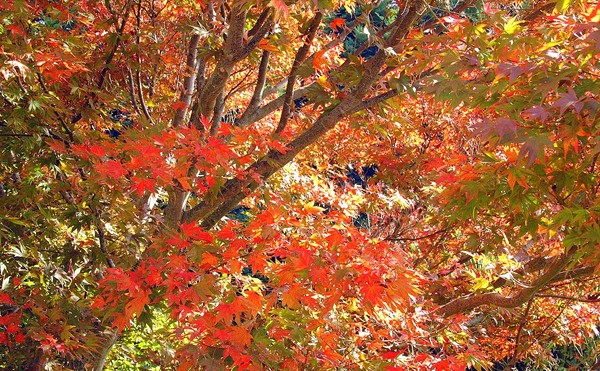Chapungu, an exhibition of contemporary African sculpture now on view at the Missouri Botanical Garden, will go a long way to change this image if viewers take the time to look closely, read carefully and relearn history. Chapungu is a survey of 66 sculptures by 26 artists who represent the best in Zimbabwean art today, specifically stonecarving, a relatively new practice now thriving in the country.
The artists in this exhibition are so highly skilled that it's easy to assume they come out of an ancient tradition. But stonecarving is a practice in Zimbabwe that dates back only about 40 years, with Frank McEwen's founding of an artists' workshop within the Rhodesian National Gallery. Subsequently, other workshops for stone-sculptors emerged, including Vukutu, Tengenenge and the Gallery Shona Sculpture, founded in 1970 by Roy Guthrie. That last workshop gave rise to Chapungu Sculpture Park, the source of works in the current exhibition. Guthrie still serves as the park's director.
These sculptures, placed throughout the garden and arranged according to theme, are stunning examples of stonecarving, finely wrought reflections on customs, legends, history and the natural world; they're humorous and heartbreaking, absolutely amazing examples of the art, which is certainly the most difficult and exacting of all sculptural techniques. These artists use a variety of stones, from opal to lepidolite to the extremely hard, crystalline matrix of dolomite. Many of the artists have used large blocks of serpentine or springstone, leaving parts of the reddish-yellow exterior "blanket" surface raw but carving and polishing forms within the stone's darker depths.
In every case, the sculpture's subject works perfectly with the character of the individual piece of stone. Agnes Nyanhongo's "Mbuya Nehanda -- Spirit Medium" (1995), for instance, is a dense vertical opal stone depicting a woman, face raised to the sky, holding a staff close to her body. A robed, serene figure, she represents a revered Zimbabwean national hero who led one of the first uprisings against white settlers in 1896; she was later taken to Britain and hanged.
"Mbuya Nehanda" is included in the section titled "The Role of Women." Nearby, "The Family" section contains another series of memorable pieces. Tapfuma Gutsa's "Listening to the Baby Kick" (1988) is a sensitive portrayal of pregnancy, set in the Garden's iris section. Colleen Madamombe's "The Birth" (1992) shows a new mother in the throes of childbirth as the baby emerges and slides into the waiting hands of the grandmother.
The "Social Comment" section includes sculptures that thematize Zimbabwe's political history and some of the more dramatic problems that have emerged there in recent years. Joseph Muzondo's "Bringing the Sad News" (1990) and "The Last Warrior" (1989) address the wars leading to the country's independence in 1980. Amos Supuni's "The End of Hope" is an abstracted figure lamenting economic hardship, corruption and crime. Dominic Benhura's "Our H.I.V. Friend" (1997) is a depiction of sympathy and support, with two individuals carrying the burden of a sick friend's body. AIDS has decimated African countries such as Zimbabwe; Benhura's sculpture is a powerful expression of strength in the face of a devastating scourge.
Other sections in this exhibition include "Nature and the Environment," "Custom and Legend," "Village Life," "The Role of the Elders" and "The Spirit World." The five dozen sculptures in this show share a common medium -- stone -- and many share themes. But they are marked much more by their differences, with each artist developing a distinctive style of carving. Nicholas Mukomberanwa's sharp, faceted style in "My Experience" (1992) contrasts starkly with Benhura's more spontaneous, expressive style, and Bernard Matemera allows forms to swell, balloonlike, from the smooth, polished stone. There is no mistaking one artist's style for another's.
Likewise, each artist has his or her own approach to the art. Most are largely self-taught; many have apprenticed with elder stonecarvers. Gutsa draws from a variety of sources, including Western art ("The Western world has long borrowed from Africa. I find no problem in borrowing from them," he argues). Some of the artists work with assistants, but most carving is done by the artists. Benhura begins a work by making preliminary drawings on paper but tears them up as the sculpture nears completion. In his view, the drawings often have little to do with the finished work, which he sees as a collaboration between himself and the stone.
Chapungu began its international tour in London, where it was on display at Kew Gardens before its arrival in St. Louis. Because of the enormous size of the pieces and the exhibition as a whole, the most logical exhibition space for it is a large outdoor garden. But exhibition spaces are never neutral; they contribute to, or can even determine, the meaning of the artworks they display. Imagine the buzz of cultural associations that accompanied the exhibition's stint at Kew. There, viewers were treated to Zimbabwean art, much of it political, on display in Britain, the country's former colonizer, and what's more, this art is set in the context of a garden -- itself a supreme symbol of colonization.
There are fewer colonial reverberations accompanying Chapungu at the Missouri Botanical Garden, of course. But here we view the works against the backdrop of nature, which can be an encouragement to read them in terms of universal themes such as "beauty," "truth" and "timelessness." Beware this temptation. These sculptures are particular artistic expressions, arising only recently in history and addressing a number of specific historical incidents and cultural phenomena. Singling out their universal appeal results in a watered-down, feel-good art experience. Viewing them with an eye to what they can tell us about Zimbabwe, its history and its contemporary art is ultimately much more rewarding.
There's still time to see Mary Ann Strandell's Polyglot Series 2001 at Left Bank Books (through July 1). Strandell's series features small (6.5-by-6.5-inch) three-dimensional silver lenticular prints on sintra. For laypeople not down with the digital lingo, these prints are like those goofy 3-D postcards on grooved plastic that were popular in the 1960s. Strandell's imagery is all abstract, derived from much processing: she makes prints from scans of photos, of paintings of objects, and so on. The results of all that processing are delightful, delicious prints of candy-colorful blobs that float and fly and dazzle. Strandell is a genius. But, like many of the artistic geniuses living in our town, Strandell is moving to New York City. This may be your last chance to catch her work locally before she forgets she ever lived here. Don't miss it.





